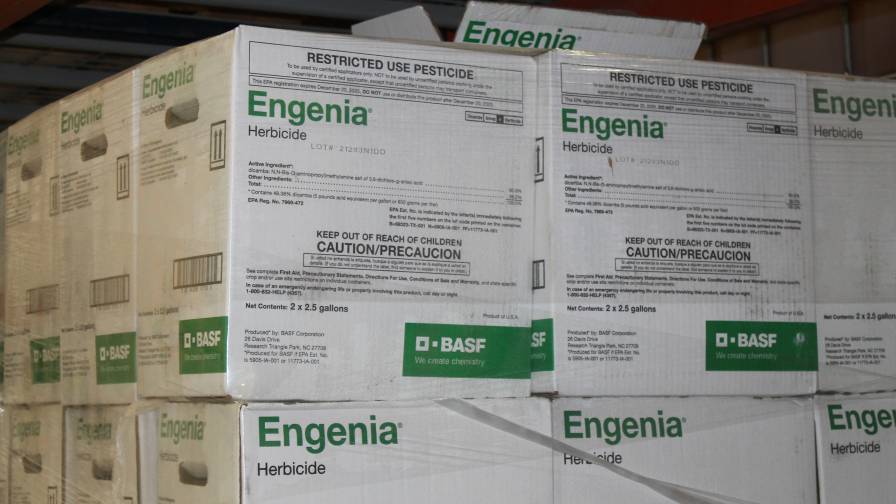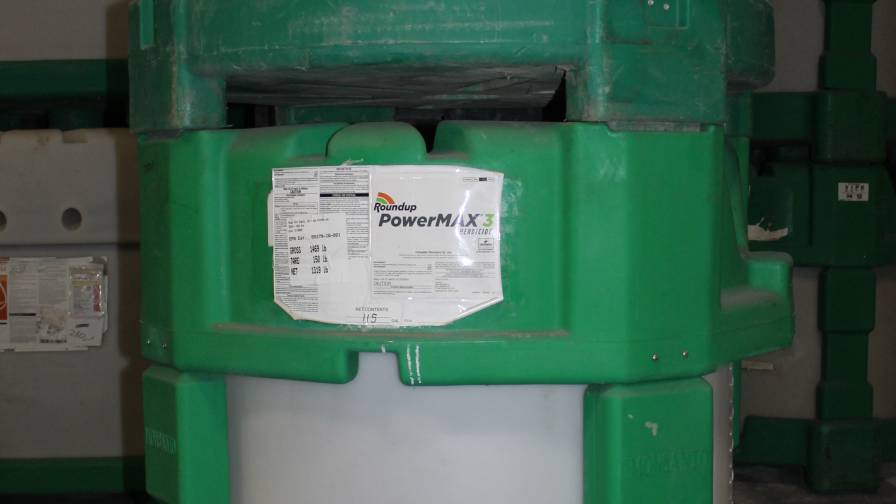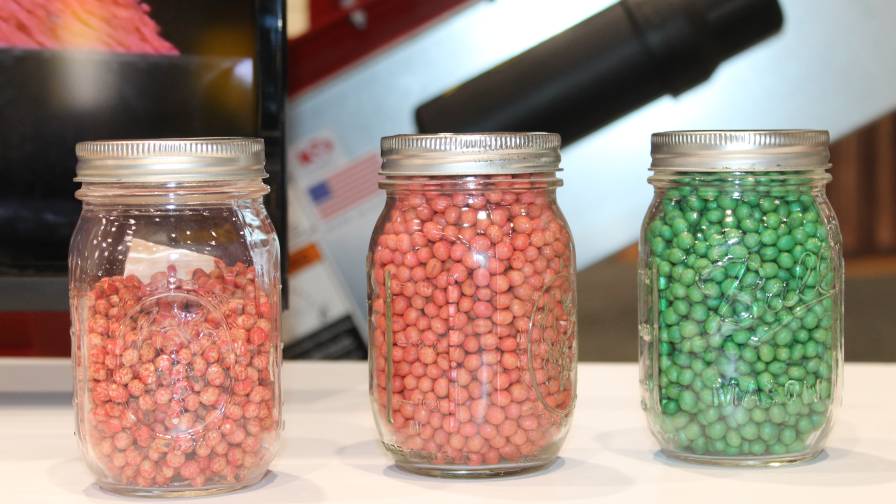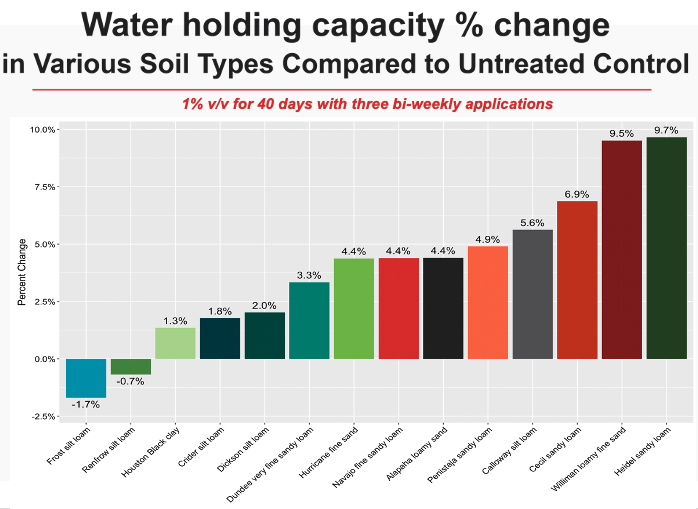Law and Disorder: The State of Crop Protection in the Courtroom

With the recent Arizona ruling, dicamba products such as Engenia from BASF — with the exception of existing stock — can no longer be applied over-the-top.
In early February, dicamba once again found itself on the wrong side of the law. A federal court in Arizona vacated EPA’s 2020 registrations for dicamba products to be used in over-the-top applications. This effectively meant that the agricultural community would be unable to apply XtendiMax (Bayer), Engenia (BASF), and Tavium (Syngenta) for the upcoming 2024 growing season.
In reviewing the case, the court found that EPA to be in violation of the Federal Insecticide, Fungicide, and Rodenticide Act (FIFRA) when it re-authorized dicamba back in 2020. “Being aware of the practical effects’ of vacatur and difficulties these growers may have in finding effective and legal herbicides to protect dicamba-tolerant crops due to vacatur, the court nevertheless found the seriousness of the agency error, including in part its failure to assess risks and costs for non-users of over-the-top dicamba compelled vacatur,” said the court in its ruling.
Naturally, the industry was displeased with this ruling. “ARA disagrees with this decision,” wrote Daren Coppock, President/CEO for the Agricultural Retailers Association (ARA), in a released statement on the matter. “It removes a determination that should be made by a science-based regulatory agency to a federal court, and the timing of the decision will be extremely disruptive to ag retailers, distributors, manufacturers, and farmers who made plans to use these products in 2024. This court decision, issued after those plans have been made and while retailers are procuring the products necessary to fulfill them, comes at the worst possible time in the season.”
And just like that, one of the ag industry’s most commonly used herbicides was ruled ineligible for the time being. Unfortunately, this has increasingly become the norm for the crop protection products business over the past few years.
For dicamba in particular, this marked the second time legal challenges to EPA’s registration of the product back in the mid-2010s removed it from the market. Back in mid-2020, the agency’s original authorization for the herbicide was vacated by the U.S. Court of Appeals for the Ninth Circuit. By the end of October 2020, however, the EPA was successful in re-authorizing dicamba for use. Still, this decision did lead to one manufacturer, Corteva, discontinuing the production of its dicamba brand, FeXapan.
In addition, other popular crop protection products have also been challenged (or sued for damages). Let’s take a brief look at some of these.
Glyphosate

If there’s a poster child for legal wranglings in the crop protection industry since the 2000s began, it’s glyphosate.
If there’s a poster child for legal wranglings since the 2000s began, it’s glyphosate. For decades now, special interest groups and anti-biotech proponents have repeatedly questioned the popular herbicides use within the agricultural marketplace. In fact, as recently as December 2023, the Center for Food Safety, Beyond Pesticides, and several farmworker advocacy groups petitioned the courts to cancel EPA’s glyphosate registration based upon a federal court’s decision that found fault with the agency’s human health assessment.
And then, of course, there are the damage lawsuits against glyphosate (and in particular) manufacturer Bayer CropScience. Since the International Agency for Research on Cancer found that the herbicide is a “probable carcinogen” based upon its own data, numerous individuals has successfully sued Bayer/glyphosate for health issues caused by using the product. The most recent such instance of this happened in late January, as a Pennsylvania jury awarded $2.25 billion in damages to a man who claimed using glyphosate caused his cancer.
News of this verdict caused shares of Bayer to drop 5% immediately following the decision. And overall, the crop protection products maker’s stock shares have lost approximately half of their value over the past 12 months.
Naturally, Bayer has fought back against these legal challenges. In 2020, the company agreed to pay between $10.1 billion and $10.9 billion to settle thousands of glyphosate lawsuits. Furthermore, the company is fighting to maintain glyphosate’s registration, with the support of industry trade groups.
“ARA will continue to defend glyphosate in order to ensure the product’s availability in the future,” wrote Coppock in a statement regarding this challenge, Rural Coalition et al v. EPA et al. “We have long supported decisions based on sound science, and that has been the case with glyphosate. This is one of the safest, most versatile, and widely used agricultural pesticides in the U.S. and access to it continues to be vital to American agriculture.”
Seed Treatments

In mid-2023, a lawsuit was filed by the Center for Food Safety and the Pesticide Action Network North America in the federal U.S. District Court of Northern California to force EPA to “assess and register” seed treatments as pesticides.
Given some of the successes that opponents have had in the nation’s courtrooms challenging crop protection products themselves, there has now been some efforts targeting other crop input categories as well. Lately, seed treatments have come under attack.
In mid-2023, a lawsuit was filed by the Center for Food Safety and the Pesticide Action Network North America in the federal U.S. District Court of Northern California to force EPA to “assess and register” seed treatments as pesticides. Currently, the agency exempts seeds coated with insecticides as treated articles exempt. The groups in the lawsuit allege that since the neonicotinoid insecticides commonly used on some treated seed “cause widespread harm to birds, pollinators such as bees, beneficial insects, and endangered species, EPA must apply that registration process to coated seeds and stop exempting them from it.”
About this same time, in June 2023, the New York Legislature passed a bill prohibiting the sale or use of corn, soybeans, or wheat seed coated with five different neonicotinoids unless the state environmental and conservation commissioner determined there was not adequate alternatives. (Luckily, this provision doesn’t go into effect until 2027.)
Chlorpyrifos
Fortunately, not every crop protection product has fared poorly in the courtroom. In fact, for one of the most widely used insecticides, chlorpyrifos, the news has actually been good. In November 2023, the Eight Circuit Court of Appeals vacated the EPA’s ban on the product. The ban originally took effect in February 2022, when it revoked food residue tolerances for the insecticide, meaning no amount of chlorpyrifos residue on food or feed would be considered safe. This, in turn, was a response to an April 2021 ruling by the Ninth Circuit Court of Appeals, which ordered it to either ban it or come up with a detailed plan to regulate it to protect “vulnerable populations.”
Plaintiffs in the case for chlorpyrifos’ use included dozens of ag groups, including the American Farm Bureau Federation (AFBF), American Soybean Association (ASA), most state soybean associations, and the National Association of Wheat Growers. AFBF asserted that the agency ignored scientific evidence that proved the pesticide’s safety, and the three-judge panel agreed.
“Today’s ruling is a win for agriculture and science-based regulation,” said Daryl Cates, a soybean farmer from Illinois and ASA President of the decision. “Federal agencies cannot be permitted to ignore their own science at the expense of America’s farmers. This ruling will restore safe, effective uses of a tool needed by many growers to protect crops from damaging pests and help preserve an affordable food supply.”
Looking for More Strength
Given all these legal issues currently dogging the crop protection products industry, some association heads are looking for ways government legislation could help strengthen EPA’s hand. In February, The Sound Science for Farmers Act was introduced by Senators Ted Budd (R-NC) and Joe Manchin (D-WV). This was meant to address the widespread concerns about the lack of thorough interagency and peer review of chemical assessments.
“EPA’s proposed changes to its chemical risk evaluation process are worrisome, to say the least,” said The Fertilizer Institute (TFI) President and CEO Corey Rosenbusch. “Dozens of building-block chemicals critical to the agricultural space could be banned or de-facto banned by unachievable standards. The unintended consequences here are staggering.”
The solution, according to TFI and a coalition of other impacted industries, is to ensure accountability, stakeholder engagement, and scientific quality are considered during EPA assessments, risk evaluations, and regulatory actions.
“Here we are as an industry saying that these assessments need to be more rigorous and more transparent,” concluded Rosenbusch. “The Sound Science for Farmers Act achieves those goals.”






